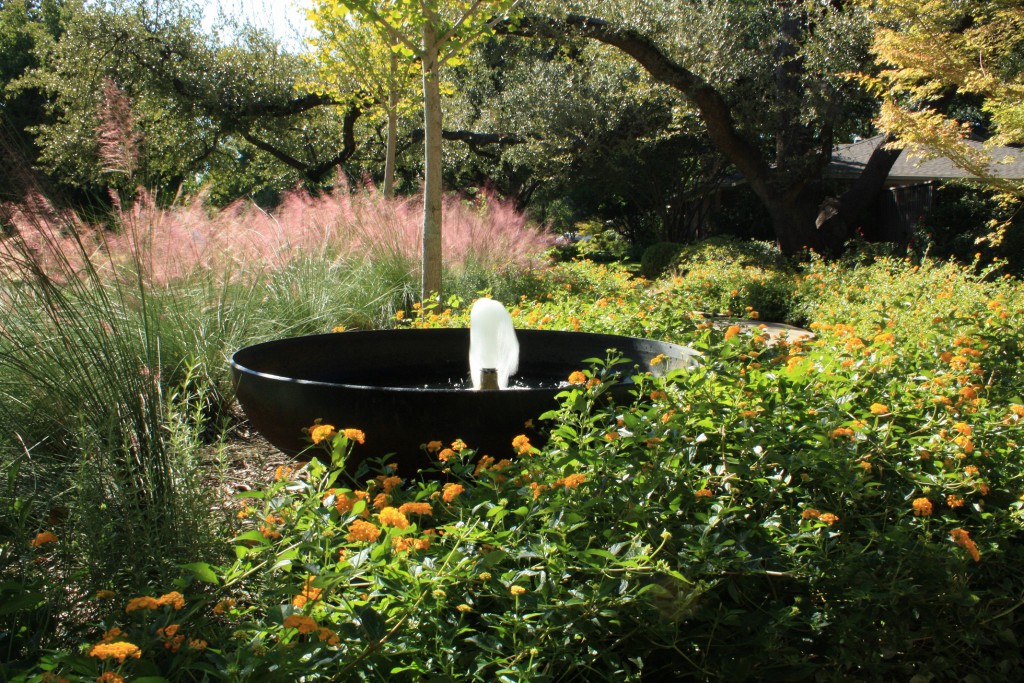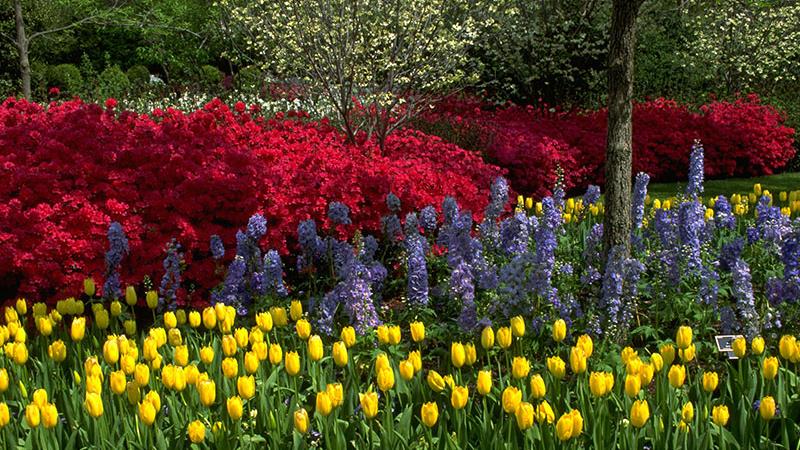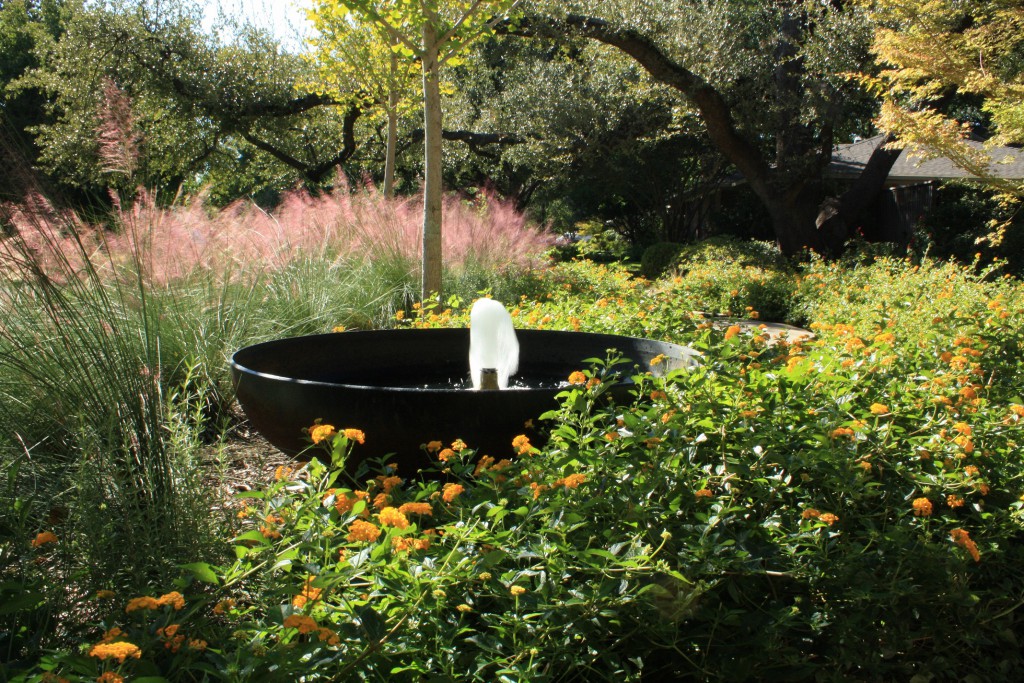
Landscape Design: Azaleas in Dallas and the Case for Native Plants
The Importance of Adding Native Plants to North Texas Gardens
It’s that time of year when azaleas put on their relatively short-lived but incredible show along Lakeside Drive and at the Dallas Arboretum. A lot of people in Dallas love azaleas and it’s easy to see why – they’re beautiful when they are in full bloom – the problem is azaleas don’t love Dallas. The key to a happy landscape is choosing plants, shrubs, and trees that work within your yard’s natural ecosystem versus those that don’t. Read on to learn more about how history has helped azaleas adapt to Dallas and why native plants thrive best in our landscapes.
How Azaleas Came to Live in Dallas
Azaleas were introduced into Dallas in 1934 when an oilman, Walter W. Lechner and his wife, Ruth, had a vision for their front yard, and that vision included azaleas. The problem was, azaleas hate heavy clay soil; Dallas has black clay soil. Azaleas prefer acidic soil and don’t thrive in the limy, alkaline soil found in Dallas. Azaleas have shallow root systems that need moist, well-drained soil that’s not too dry; again, this does not describe Dallas (except maybe this week in the midst of all this rain we’re getting!) The solution to this challenge is a famous one; they hired landscape designer Joe Lambert Sr. who had no choice but replace the top two feet of soil and make sure they got the care they needed. Thus began Dallas’ love affair with azaleas.

Image courtesy of the Dallas Arboretum showing Jonsson Color Garden
Today, Encore azaleas are the most popular because in addition to their showy spring blooming period, they will bloom again sporadically during the summer and fall. They are popular in Texas because they can also withstand the sun better. Even so, azaleas are considered “finicky.” Jimmy Turner, the former Dallas Arboretum’s senior director of gardens once said, “I love to have azaleas at the arboretum but I don’t have them in my home garden.”
Why Native Plants are Important
Turner’s remark speaks not just on the challenges of growing azaleas, but to the issue of choosing plants, shrubs, and trees that work within your yard’s natural ecosystem versus those that don’t. Sure, most, if not all soil need amendments to optimize plant growth, but the question is, how much is too much? At Bonick Landscaping, we have watched the demand for azaleas from clients decline steadily in recent years to the point where today, we get very few requests for them. We also don’t include them in our landscape design recommendations.

Designed by Bonick Landscaping of Dallas, TX.
As a landscape designer, I have always preferred environmentally responsible landscapes that rely heavily on the use of native plants, so it has been gratifying to watch over the last decade the growing trend toward the use of native plants in landscape design. Native plants offer a number of virtues. One is completely aesthetic: the use of native plants reinforces the regional uniqueness of the various climate zones across the country, including the Dallas area. Native plants are also highly adaptable to difficult site conditions and require less maintenance and fewer resources, such as water and fertilizers because they have adapted to the soil and developed resistance to climate extremes. While still vulnerable to diseases and pests, are likely less-so than many non-native plants.
Another strong argument for the use of native plants is the vital role they play in sustaining a habitat where birds, bees, butterflies and other wildlife can survive and thrive. Landscapes today that are filled with hybrids and exotic plants, even with bird feeders, offer little to sustain native and migrating birds. Ninety-six percent of songbirds, for example, raise their young on a diet of insects and arthropods. Native insects need native plants to survive. Most insects thrive on only a few kinds of plants and it takes thousands of years for them to adapt to new food sources. Studies show that native plants support 35 times more insects than non-natives do. According to the Audubon Society, part of the nearly 50% population reduction in many of our bird species, within the space of 50 years, is the result of the loss of native plants that serve as food for insects that birds require to rear their young. It is also important to remember that many creatures that don’t consume insects themselves, live on wildlife that do.
All this said, I am not suggesting that people go out and eradicate every non-native plant that may currently be in their landscape design. I do hope, however, that in writing this, Dallas area homeowners will gain a little bit better understanding of why native plants are so important and choose native plants moving forward and seek advice from a landscape designer and nursery that shares these values.
For over 30 years, Bonick Landscaping has served Dallas area clients with the highest standards looking for out-of-the-ordinary luxury landscape design and pools by offering the best in service, workmanship, and plantings. Services include hardscape and landscape design, pool designs, pool construction and installation, lawn care services and garden maintenance (overall estate management), pool maintenance, and more. For discerning clients in Dallas who want to express their own distinctive style through their landscaping, Bonick Landscaping can help you realize your dream. Call us at 972-243-9673 or visit our website at www.bonicklandscaping.com.
You May Also Enjoy:
Building a Balanced Butterfly Garden
6 Reasons Why Regular Landscape Maintenance Matters
5 Ways to Refresh Your Gardens with Spring Color Installation